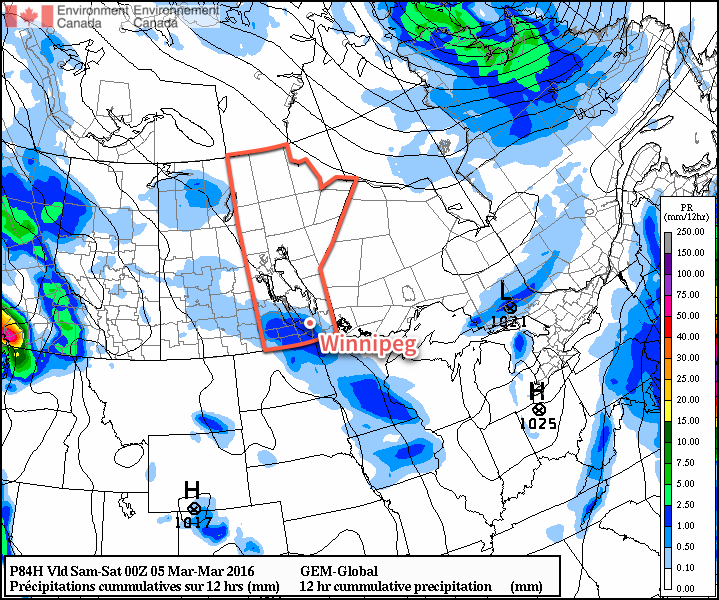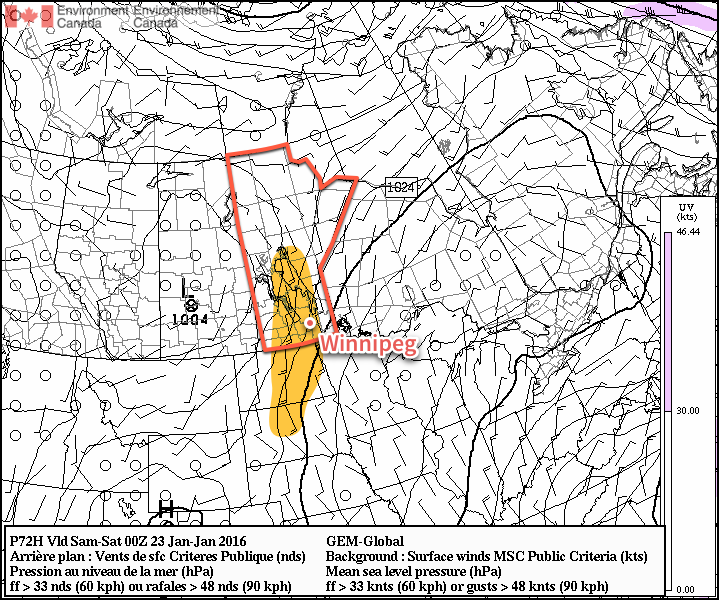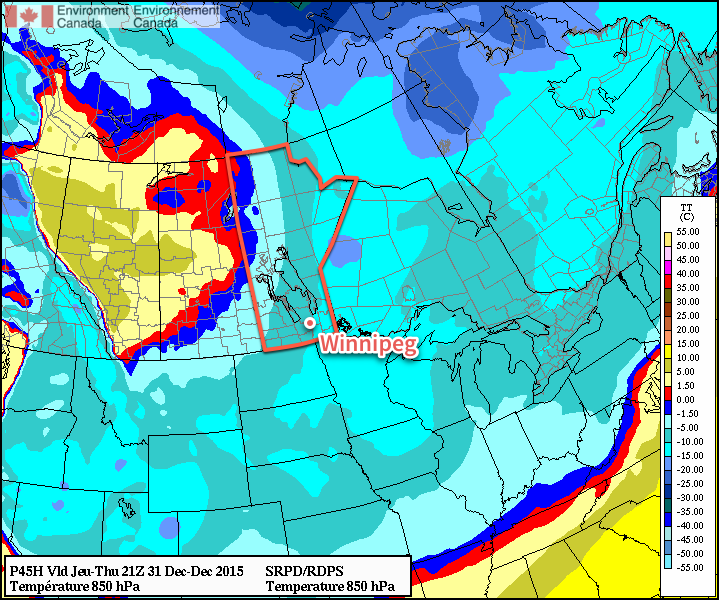A low pressure system moving through Manitoba today will bring a fresh batch of snow alongside some gusty southerly winds to Winnipeg and lead a transition back to a stretch of above-normal temperatures that will set up through the weekend and persist into next week.
Snow will be in place throughout the Red River Valley this morning and most places will see about 2-5cm of accumulation before it moves off to our east for the afternoon. In its wake, temperatures will rise under cloudy skies to our daytime high near -2°C.
Through the morning, winds will be out of the south-to-southeast at 20-30km/h, but will taper off as the snow pushes off to the east.
The big question for the remainder of the weekend is exactly how warm it’s going to get. And, unfortunately for some, I’m leaning on the pessimistic side.[1]
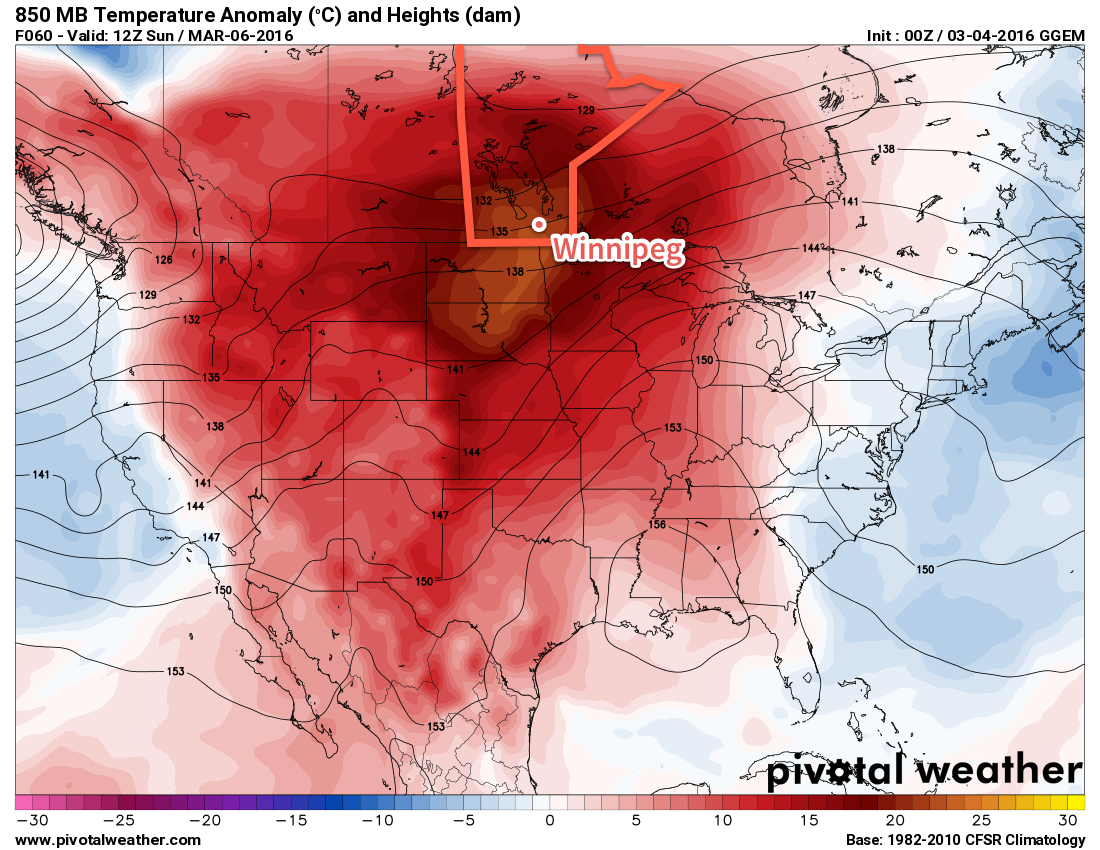
Heading into the weekend, significantly milder air will be pulled eastwards across the Prairies, but the big question is how warm will it get? This isn’t quite so easy to answer for a variety of reasons, but one of the biggest being the snowpack in place over the region.
The GDPS is forecast temperatures at 850mb, approximately 1.5 km above the ground, to climb to nearly 20°C above normal for this time of year. Typically temperatures at 850mb can be used as guidance for daytime highs and overnight lows, however that relationship can be complicated in the winter time. As warm air moves in, the snow at the surface cools it and helps develop an inversion.[2] Inversions work to isolate the surface from the warmer air moving in, and can result in very warm air aloft not making it down to the surface.
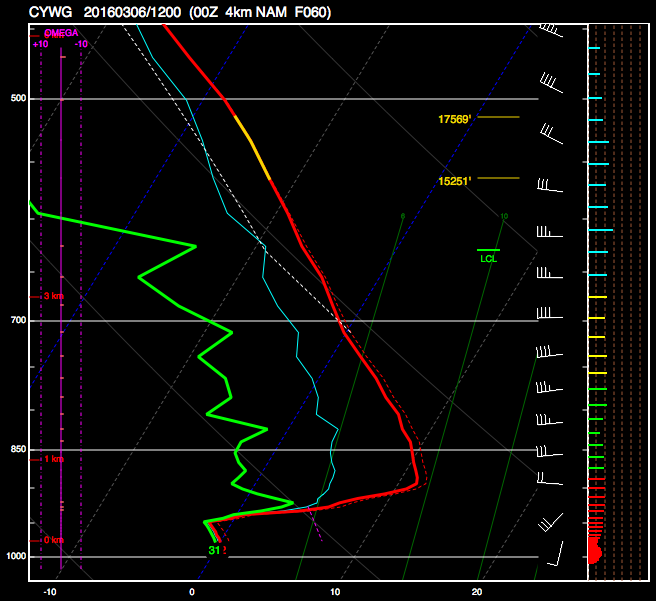
This is a forecast sounding, which shows the forecast of temperatures (red) with height (up is higher) for a specific location. The inversion is fairly clear and is depicted by the area near the bottom where the red line moves to the right instead of the left. This will likely result in our temperatures being lower than some automated forecasts may suggest.
The overall weather pattern through the weekend will be a steady flow of warm air aloft interacting with a dynamic surface pattern. Saturday will start with cooler temperatures near -11°C and mainly cloudy skies trapped underneath a ridge of high pressure that will slide off to our southeast. It will likely be a cloudy day as low-level cloud is reinforced by cool outflow from the high pressure system trapped beneath the inversion of the warmer air aloft.
As a low pressure system begins tracking eastwards across the Prairies, it will help moderate winds develop over the Red River Valley. By mid-to-late afternoon on Saturday, winds will strengthen to 30-40 km/h out of the south as the temperature rises to -1°C. The winds will strengthen slightly for Saturday night to 40 gusting 60 km/h. These stronger winds will persist much of the night under cloudy skies and help the temperature remain steady near 0°C.[3]
Sunday will see the winds drop off in the morning and the Red River Valley move solidly into the warm air. While skies will likely start cloudy, some sun should begin poking out for the afternoon as the winds pick up a southwesterly component and start mixing some drier air into the valley. Daytime highs look to climb to the 4°C mark with overnight lows dipping to just -1°C under partly cloudy skies.
Long Range: Continuing Warm
There’s no question about it: the warm weather will be the dominant weather story for the coming 10-14 days.
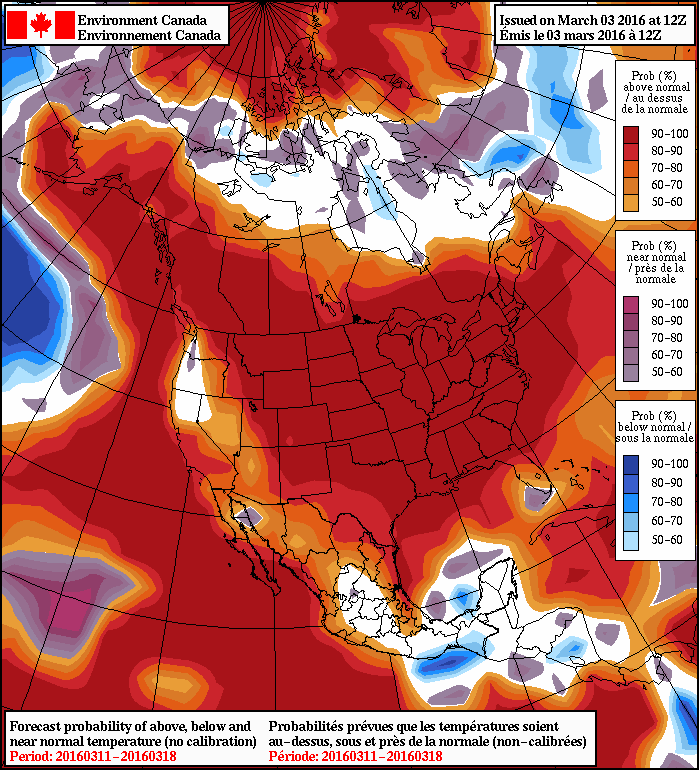
El Niño is back with a vengeance as above normal temperatures are expected to sweep across much of southern Canada and the United States. It’s hard to say exactly how warm it will get, but for Winnipeg it seems quite likely that daytime highs above 0°C will become quite commonplace over the coming weeks.
Precipitation outlooks are for near-normal amounts, so the odd disturbance giving us a couple cm of snow or a few mm of rain should be expected. Get ready for sloppy roads, warm sun, and suspension-shattering potholes.
Winnipeg’s seasonal daytime high is currently -4°C while the seasonal overnight low is -14°C.
- Which I’m relieved to say is still above normal for this time of year! ↩
- An inversion is when temperatures behave abnormally with height in the atmosphere, rising with height rather than falling. ↩
- There’s a slight chance with some of the stronger winds that the could be some bursts of warmer air through the night that could see temperatures climb to +2 to +3°C. ↩
